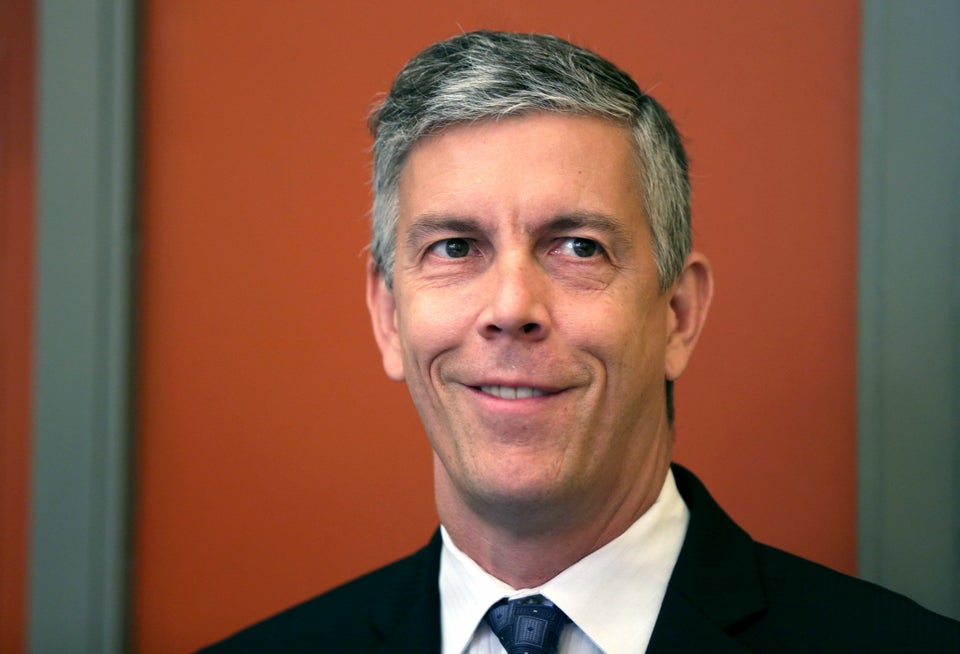
The pressure is on teachers this year. Students are preparing to be tested on the new, tougher Common Core State Standards in over 40 states where, in many cases, teachers will be evaluated on the outcome. But a new report published by the American Institutes for Research (AIR) has identified a school reform with proven results in boosting student achievement, and not only on tests.
The report, supported by the Hewlett Foundation, found that “deeper learning” schools graduate high schoolers on time at rates 9 percent higher than other schools, a win for teachers and students alike. The study paired 13 “deeper learning” schools, all members of Hewlett’s Deeper Learning Network, with other schools that have comparable student demographics (including underserved student populations) and incoming achievement levels. Graduates of the “deeper learning” schools were over 4 percent more likely to enroll in four-year colleges, and they were slightly more likely to attend selective schools.
But what the heck is “deeper learning?”
An old dog by a new name, according to Ron Berger, the chief academic officer at Expeditionary Learning, a network of 165 schools that use “deeper learning” across 33 states.
Related: New international exam results show U.S. must back changes to help students develop deeper learning
He says “deeper learning” combines a focus on in-depth academic knowledge and skills -– and tends to embrace the goals of the Common Core State Standards and the Next Generation Science Standards –- with the belief that students must also master communication skills, learn to collaborate effectively, and own, manage and justify their own learning to be truly college and career ready. For teachers and parents, this might sound like a no-brainer. So, what’s new here?
Not much, according to Jennifer O’Day, an AIR institute fellow who worked on the report.
Deeper learning schools use teaching strategies that have long been considered good practice, like project-based learning, long-term cumulative assessments, advisory classes, and block scheduling. What’s new, O’Day says, is the explicit “combination of deep content knowledge and problem solving with softer skills,” like the ability to collaborate, and learning how to learn.
What separates deeper learning schools from traditional schools is a systemic, school-wide dedication to pursuing communication and “soft” skills -– which sometimes get pushed to the back burner as standards are increasingly tied to test scores –- just as aggressively as mastery of academic content.
In the study, students in the “deeper learning” schools in New York and California outperformed their counterparts on those states’ standardized tests and on the Organization for Economic Cooperation and Development’s PISA-based test, which is based on the internationally used Program for International Assessment Test (PISA) student achievement test.
“The push in the United States has been so deeply around accountability based on high-stakes assessments that educators have become more and more fearful that the kind of going deeper [learning emphasized by “deeper learning”] has not been celebrated and prioritized,” said Berger. A high achieving school in this country, he says, is a school with high test scores. The goal of deeper learning is to expand that measure of achievement to include more than just standardized tests.
The report also found that students in schools dedicated to deeper learning reported higher rates of academic engagement, motivation to learn, self-efficacy and collaborative skills. O’Day says the study, the first of its kind, is significant because it provides data-driven incentives for schools to adopt deeper learning, which will complement the goals of the Common Core.
Berger says this incentive is important in an industry ripe with trends and fads, and a teaching force that has become increasingly skeptical of reformers praising the latest silver bullet.
“There’s a danger of teachers thinking there’s another new name of something that’s being forced on us,” he said. Berger stresses that these practices aren’t new, but that they’ve been devalued. Deeper learning schools prioritize them.
“I hope that teachers see it as affirmation of some of their own instincts.” By adopting deeper learning, “they could get support and also get resources for how to do it more thoughtfully,” he said.
O’Day says that schools all across the country are already using these practices, but they often happen in isolation. Project-based learning might be used in one really strong English classroom, for example, and not anywhere else within the school. But the movement is gaining traction. Expeditionary Learning encourages deeper learning in 165 schools, and there are more than 500 schools in 42 states within Hewlett’s Deeper Learning Network.
“People have become dissatisfied with the narrow assessments for No Child Left Behind. They’re seeing that what we need is education that addresses more aspects of student learning and student preparation for work and life. There’s definitely an openness to this work,” said O’Day.
The new research, she says, is reassurance to teachers already doing this work in classrooms all over the country and an invitation for more to join the club.
“This is not some fluke. It is what happens inside the schools for the kids and the kinds of opportunities they have that makes a difference to these outcomes,” said O’Day.
This story was produced by The Hechinger Report.
